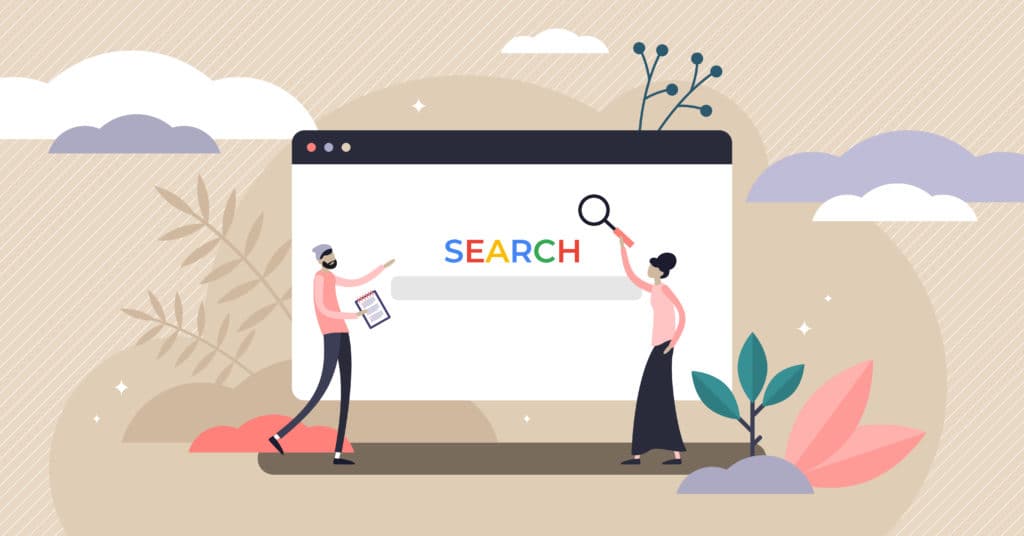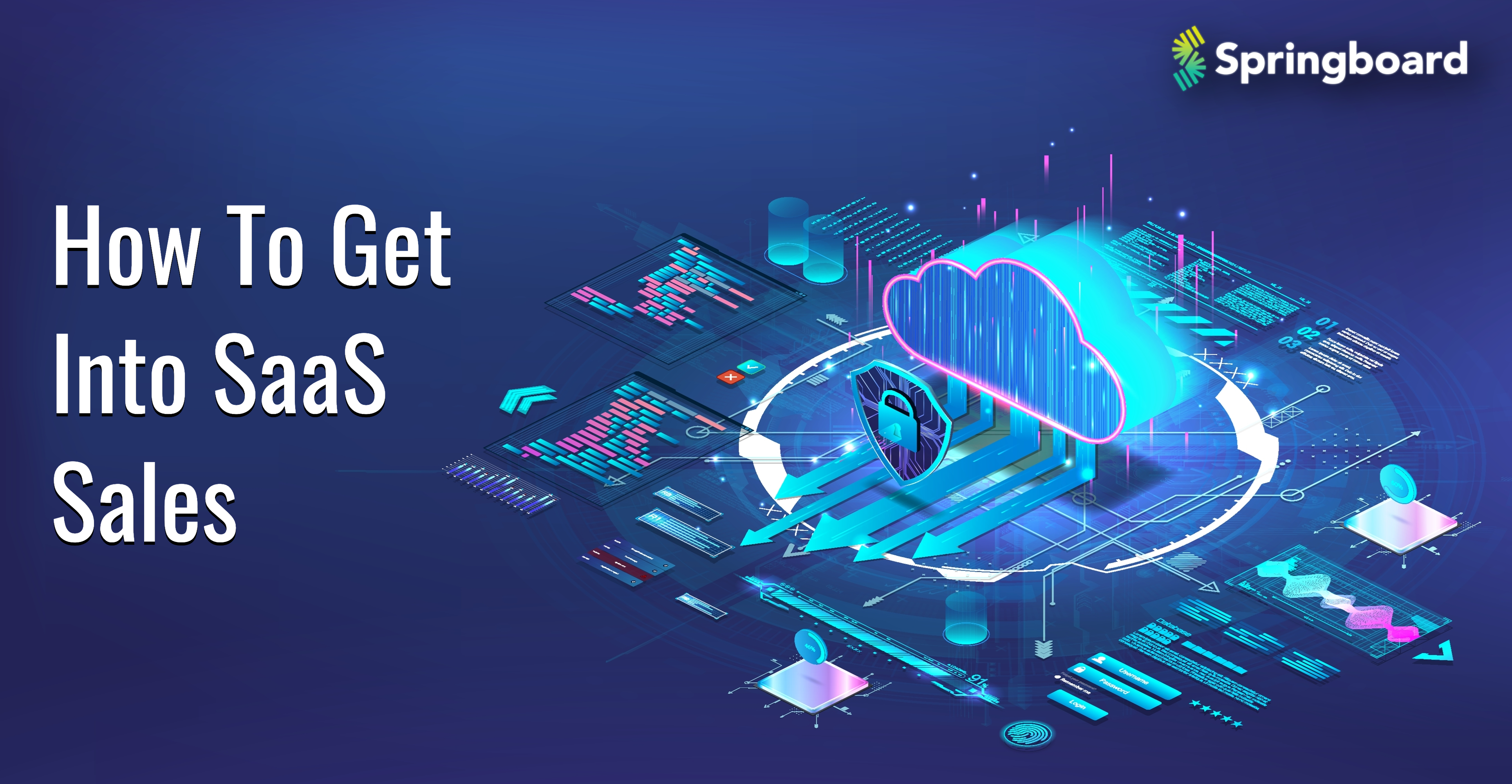When it comes to selling a washing machine or other home appliance, the process is relatively straightforward: the customer does their research, approaches a salesperson, reviews the product, and makes a decision. SaaS products, on the other hand, are a more complicated sale. Software-as-a-Service (SaaS) products are custom software solutions designed to help businesses do things more efficiently, such as automate business processes, analyze their data, and track operations in real-time. Unlike traditional software products, SaaS is sold on a monthly or annual subscription basis, with features that are tailored towards the client’s unique needs. Consequently, the sales process is consultative rather than product-oriented, with the sales representative acting as a trusted partner to the client.
With SaaS sales, there is no physical product to show, and educating the customer on what it is, how to use it, and why it can solve their problems can take months or even years. BMC software predicted that by the end of 2021, 99% of organizations would be using one or more SaaS solutions. Nearly 78% of small businesses have already invested in SaaS options.
In this article, we’ll tell you how and why SaaS companies take a targeted approach to sales. Then we’ll show you what the typical SaaS sales process looks like step by step. Finally, we’ll discuss the four most common sales models used in SaaS.
SaaS Sales Is a Highly Targeted Process

Unlike traditional sales, the SaaS sales process requires a mix of high-touch customer support and digital experiences that enable customers to self-serve. Self-service infrastructure enables customers to find solutions, information, or support on their own. For example, taking a software tutorial, finding answers to frequently asked questions, or even onboarding. These tools can take the form of knowledge articles, videos, interactive tutorials, and more.
Most SaaS sales reps take a highly targeted approach, researching the potential customer’s organization to understand their pain points and creating a personalized customer journey to guide them through the sales funnel. In fact, only 39% of a sales rep’s time (around 13 hours per week) is spent selling or interacting with customers. The rest of their time is dedicated to research and administrative tasks, such as a data entry and answering emails.
Many SaaS sales representatives employ a tactic called account-based selling, which involves treating each prospect like a market of one. In practice, it means targeting multiple contacts within a company by using a tailored approach for each one.
Say you’re selling an email marketing tool. Your contacts might include the chief marketing officer (likely to be the key decision-maker for this type of purchase), a marketing manager, and perhaps the VP of sales. In other words, you’ll want to contact the key stakeholders within a buying committee. These contacts are selected based on an ideal customer profile—the type of persona that is most likely to buy the software and benefit from using it. Companies often use historical qualitative and quantitative sales data to determine this.
Target customer groups might be distinguished by company size, a particular industry, or their firm’s digital maturity. For example, a small firm that uses spreadsheets to track labor hours and schedules for hourly workers won’t need full-fledged Enterprise Resource Planning (ERP) software (a type of software used to manage day-to-day operations such as accounting, project management, and supply chain operations), but they might need a workforce management solution.
Account-based selling is a markedly different approach from the “spray-and-pray” methodology for which the telemarketing industry is notorious. This approach is predicated on acquiring as many leads as humanly possible and spamming them with calls, emails, and mailers in the hope that something will stick.
The type of sales techniques used by tech sales professionals depends on the company, the type of product, and the target customer, which can be individuals (B2C), enterprises (B2B), or both (learn more about technical sales representatives here). In some cases, it also depends on the sales rep’s personality type.
“My top two sales reps use very different approaches,” said Evan Warner, a seasoned sales professional who has supervised sales teams at major SaaS (Software-as-a-Service) companies including SurveyMonkey and Fixt. “One rep leads the team in terms of activity—they make the most calls, send the most emails. They also schedule a lot of qualified meetings with account executives. However, my top rep has the least amount of activity, but they were still able to bring in the same amount of revenue.”
Given that SaaS products are highly customizable and are purchased on a subscription basis, sales reps use a combination of different sales techniques to convert leads into buyers.
Related: What is Technical Sales? and 106 Sales Terms To Help You Close
What Does the SaaS Sales Process Look Like?

Before we dive into sales methodology, let’s gain a better understanding of what the typical sales process looks like. This will help you better understand the reasoning behind each sales technique and how to choose the best one.
1. Define your ideal customer
To take a targeted approach to customer acquisition, you need to define your ideal customer and find prospects who match that profile. This could mean targeting people based on their industry, job title, or their company’s annual revenue, for example. You can use different approaches to target leads based on their readiness to buy. For example, someone who downloaded a whitepaper from your company’s website is probably further along in their research than a first-time visitor to your website.
Sales reps can prospect leads actively or passively. Active lead generation means detecting ideal prospects and making initial contact via phone or email. Passive lead generation means waiting for leads to find you. To do this, you’ll need robust self-service capabilities that enable customers to search for more information on your website, read SEO content, watch a webinar, or enroll in a free trial or software demo. In other words, the right infrastructure needs to be in place to allow leads to move along the sales funnel autonomously.
2. Qualify your leads
After gathering a database of prospects, sales reps undertake a process called lead qualification—the process of determining which potential customers are most likely to make a purchase. Given the lengthy SaaS sales cycle, customer acquisition costs are high, so most companies concentrate their efforts on qualifying leads.
Automated lead scoring platforms track website visitors and score them according to the likelihood of them making a purchase. However, you can also qualify leads by doing your research. Try to understand the prospect’s industry and what pain points they may be facing. You can also qualify leads by calling or emailing them as soon as they start the trial of your software to gauge their interest.
3. Initiate contact with your leads

After doing your research, it’s time to make initial contact with the prospect. This could be through a sales-qualified meeting set up by a sales development representative (i.e. the sales rep reaches out to the customer to ask if they are interested in hearing more about the product).
During this initial meeting—face-to-face, over the phone, or via video conference—you might give a presentation to demonstrate how the product or service meets your prospect’s needs. This is also a time to ask the customer about their needs and respond accordingly.
At the end of the meeting, you might conclude by offering the lead a free trial or demo (if they haven’t signed up for one already) so they can learn more about the product.
4. Follow up
Once you’ve made initial contact with a lead, it’s important to nurture that lead so they will continue to keep your company top of mind. Follow-ups might include sending content marketing collateral such as SEO content, blog posts, or white papers to educate the client further or provide them with case studies to show similar clients your company has worked with and the outcomes they achieved with your software.
5. Address their objections
After trialing your product or watching a demo, prospects will typically have questions or concerns. Listening to prospects’ concerns and addressing them is one of the most crucial steps toward closing a sale.
Common objections include:
- “Your product is too expensive.”
- “Your product doesn’t have X feature.”
- “Competitor X offers the same product but with Y feature.”
Unfortunately, lots of salespeople abandon pursuit after rejection. 44% of salespeople abandon pursuit after one rejection, 22% after two rejections, 14% after three, 12% after four. This is in spite of the fact that 80% of sales require at least five follow-ups to convert, according to Lucidchart. Many sales reps use battle cards to address common questions and concerns—these are visual aids comparing your company’s product, service, feature, or pricing to one or many competitors.
Work with your prospective clients to help them understand the value of your product and how it addresses their pain points. If they are concerned about a missing feature, ask questions to uncover why they are looking for that particular feature. If the client is worth the effort, or if many prospects have voiced similar concerns, you may want to raise the issue with your product team.
6. Close the sale
Closing is the process of a client signing a final contract and rendering payment. SaaS companies use a variety of pricing models. Some companies offer month-to-month service agreements or pay-as-you-go models, in which users are billed according to their level of usage. Others are billed according to different tiers of access. Some pay an upfront fee for unlimited access to the software for a period of time. Sales reps might offer an inducement to close, such as a free month of service. Discounts in SaaS are discouraged because customers who need a discount to be convinced are likely to abandon your company for a cheaper competitor, leaving your company without the opportunity to recover customer acquisition costs.
Types of SaaS Sales Methods

SaaS companies use a variety of sales methods to nurture leads and convert them into paying customers. The preferred sales model depends on a number of factors, such as the nature of the product (complex software products require more customer education), the price point and pricing model, and the target market. Certain B2B customers might need help identifying and understanding a business problem before deciding on a software solution; others have established processes and might just need software to help with automation or budgeting.
Here are the four most common sales methods used by SaaS companies.
Solution selling
One of the most common sales methods in the SaaS industry, solution selling represents a consultative approach to sales where the sales rep attempts to understand a prospect’s pain points and recommends bespoke solutions to help them solve a specific business problem. To take a customer-centric approach to sales, reps need to meet buyers wherever they are in the purchasing process, whether that’s awareness (the initial stages of research) or selection (choosing between different solutions or brands). This means any educational content you provide the customer with (eg: case studies, whitepapers, or webinars) are meant for their specific industry, company size, or business problem—a practice known as account-based marketing.
Solution selling first emerged in the 1970s out of Wang Laboratories, an IT company founded in 1951, to help customers understand the value of abstract solutions like software. Solution selling is problem led, rather than product led, and requires sales reps to build trust with their prospects by demonstrating that you have their best interests at heart, rather than a single-minded fixation with reaching your sales quota. Sometimes, that means choosing not to do business with a prospect who doesn’t match your ideal customer profile. Often, these customers will require more support and may even demoralize your sales team, only to churn before you’ve recovered your customer acquisition costs.
Solution selling requires copious preliminary research to understand how to best stimulate the client’s interest in the product. The sales rep’s job is to ask questions that further uncover the nature of the business problem, understand where the customer is in the buying process, and learn about their decision-making process so they can tailor the sales cycle accordingly.
For example, if an enterprise requires X number of people of a certain seniority level or those within a specific department to sign off on a software purchase, the sales rep might have to set up sales meetings or demos with each of these contacts. Today, there are an average of seven decision-makers involved in the B2B buying process. Companies in regulated industries like finance or healthcare may also require sign-off from their legal department before finalizing a software purchase.
2. Gap selling

Like solution selling, gap selling also focuses on understanding a customer’s business problem and recommending a solution. However, gap selling is designed to overcome some of the flaws of the problem-led approach. This problem-centric sales approach assumes that customers know how to define a business problem and understand its magnitude, which is often not the case. Second, selling a product on the basis of a problem might provide little more than a temporary Band-Aid solution.
Gap selling is a sale on the basis of a desired future outcome. It involves identifying the gap between where the prospect is (eg: 20% annual customer churn) and where they want to be (less than 5% annual customer churn). Theoretically, the bigger the gap, the more motivation the customer will have to buy, and the more they’ll be willing to pay.
Like solution selling, the sales rep first initiates a discussion with the customer, trying to understand the problem they want to solve. Only by understanding the prospect’s current state, and the root cause of the problem, can you design a solution. In these discussions, also known as gathering requirements, the sales rep might abstain from mentioning the product or service they’re selling until they have a sufficient understanding of the client’s problem.
3. Challenger sales method
Compared to gap selling and solution selling, the challenger sales method takes a relatively confrontational, aggressive approach to sales. In this method, a sales rep teaches the prospect about the product and takes control of the sales process. By conducting thorough research on the client beforehand and seeking to understand their needs, the challenger sales method involves delivering an irresistible pitch and tactfully pressuring the prospect. The challenger sales method was first introduced in The Challenger Sale by Brent Adamson and Matthew Dickson, which is often recommended reading for new hires in B2B sales.
Unlike the gap selling method, sales reps introduce the product or service upfront, as well as pricing. The idea is to teach the prospect something valuable (eg: the opportunity cost of not using the product), tailor the sales pitch to their needs, and take control of the conversation by being direct. Sometimes, this involves disputing the customer’s way of thinking—”Using legacy software that requires your employees to spend several hours per week on manual data entry is the reason you’re struggling with retention”—and forcing them to contemplate a new perspective. Sometimes, this means raising awareness about a problem or opportunity the prospect was not previously aware of before, and positioning the supplier as being uniquely qualified to solve it.
As businesses adopt cloud computing and other advanced technologies, SaaS products grow increasingly complicated, and educating the customer is paramount. In fact, most prospective buyers try to educate themselves before talking to a sales rep. Data shows that 47% of buyers view 3-5 pieces of the company’s content before talking with a member of the sales team.
Taking charge of the education process helps customers discover solutions they didn’t know they needed and can inspire purchase intent in an otherwise ambivalent lead.
4. Self-serve model
The self-serve model relies on robust digital infrastructure to educate the consumer, help them understand the different pricing options, and complete a purchase autonomously without ever interacting with a sales rep. This is common for lower-cost B2C or B2B products that don’t require much customization beyond offering tiered levels of access to product features. Examples include video editing tools, project management tools, file-sharing tools, graphic design platforms, or data analysis tools.
With these types of products, you can segment your users according to their needs. This is where usage-based pricing (AKA pay-as-you-go) is commonly used. For example, file-sharing tools like Dropbox and Google Drive offer pricing on a sliding scale according to desired storage capacity.
Self-service models allow companies to scale without growing the sales team and are suitable for customers who are willing to self-serve. In some cases, companies will use a hybrid approach, offering a “freemium” version of their product that enables people to use the product for free with limited features, while offering sales support to those who want a paid version or enterprise-level access. The hope is that freemium users will eventually convert to paid users. The data shows, however, that only 5% of free users generally convert.
The best part about self-service is that it drives your customer acquisition costs virtually down to zero, provided that you have a robust onboarding process and ample educational content to help your customer understand the value of the product, sign up, and learn how to use it.
Since you’re here…
Curious about a career in tech sales? Learn more with our tech sales career guide, or dive right in with our Tech Sales Bootcamp. We’ll help you switch careers in a matter of months, or your tuition money back. See our student success stories for inspiration – people are changing careers with us every day!

![What Is Tech Sales [2022 Career Guide]](https://www.springboard.com/blog/wp-content/uploads/2022/03/what-is-tech-sales-2022-career-guide.png)

